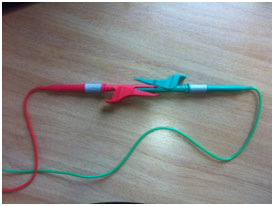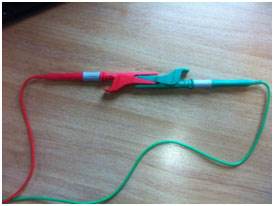Question:
Why does my continuity and insulation resistance meter sometimes display a negative resistance value after I've 'nulled' my test lead resistance as recommended?
Answer:
More often than not, problems with test instruments can be traced to faulty leads. Test leads are subject to a great deal of punishment; constantly being stressed, uncoiled, recoiled and squeezed into instrument carry cases. Accessories such as probes, crocodile clips and long reach test probes are interchanged many times during a single day of use and it is inevitable that over time, contact resistance at the point of connection will increase causing the user to doubt the result being displayed.
Crocodile clips feature an internal pressure spring which allows the clip to attach securely onto the subject under test. If these moving parts are not taken care of and cleaned regularly, foreign bodies such as brick dust, general dust and particles will impede the clips from making a decent connection, causing unwanted additional resistance. It is well documented and recommended by the IET that test leads are ‘nulled’ or ‘zeroed’ prior to taking a measurement.
There is a correct method to null out your test leads.
Figure 1 shows the correct method of connection when nulling test leads. Note that current will flow directly from lead to lead.
Figure 2 shows the incorrect method of connection when nulling test leads. Note that current has to flow through the hinges of each crocodile clip. A value of resistance will be subtracted from the final test result when the leads have been nulled using this method of connection. Should the leads be re-connected in the correct manner and a measurement of resistance taken, the instrument may give an error message or show a value of ‘negative’ resistance.



